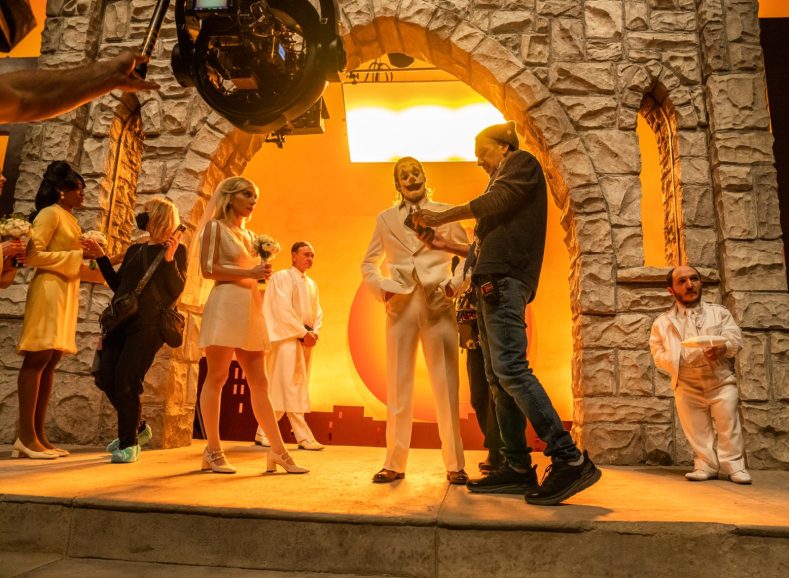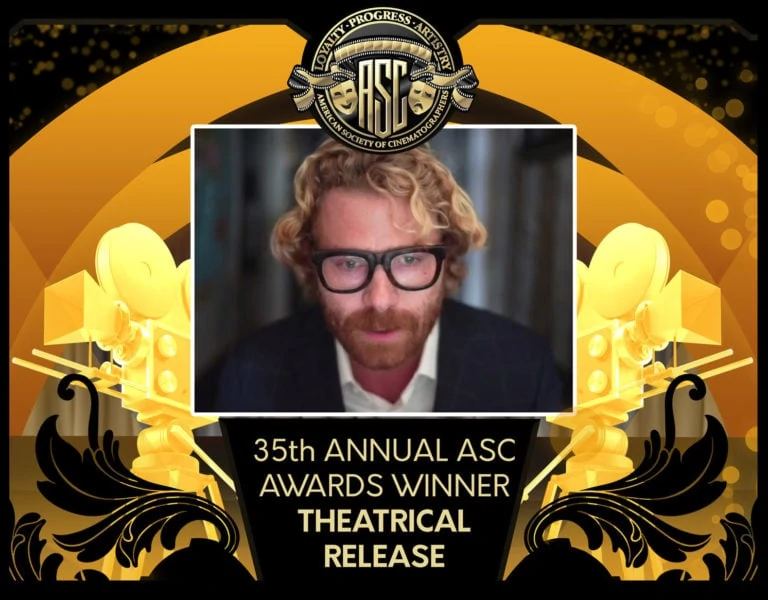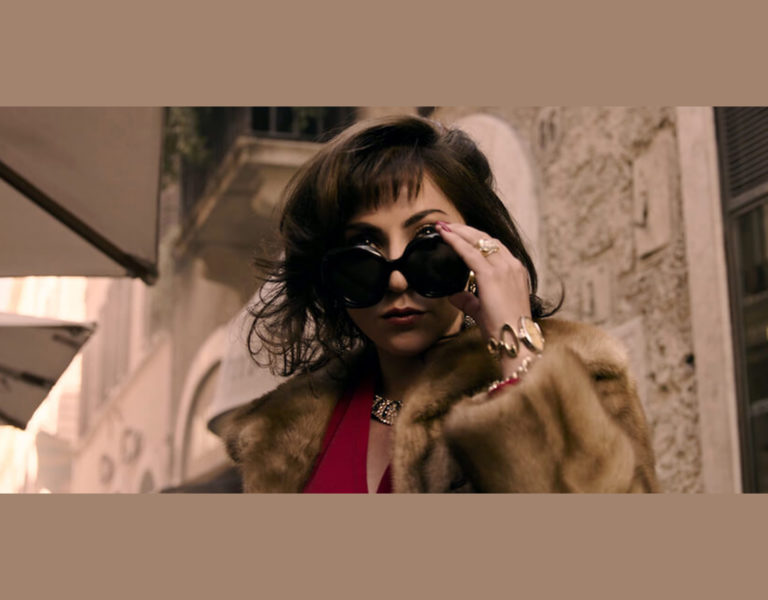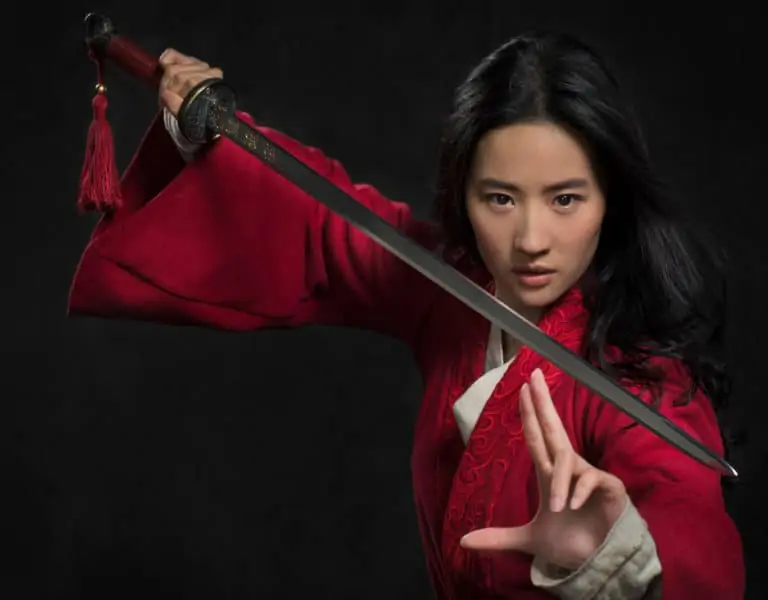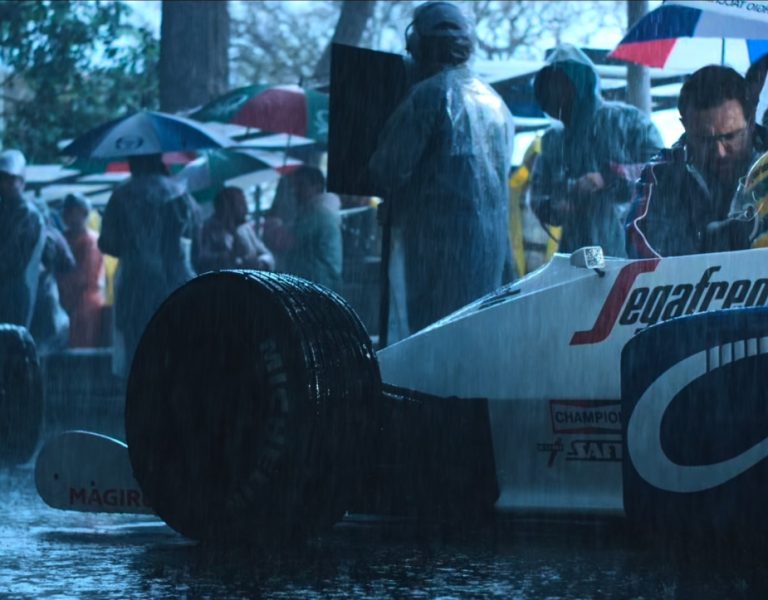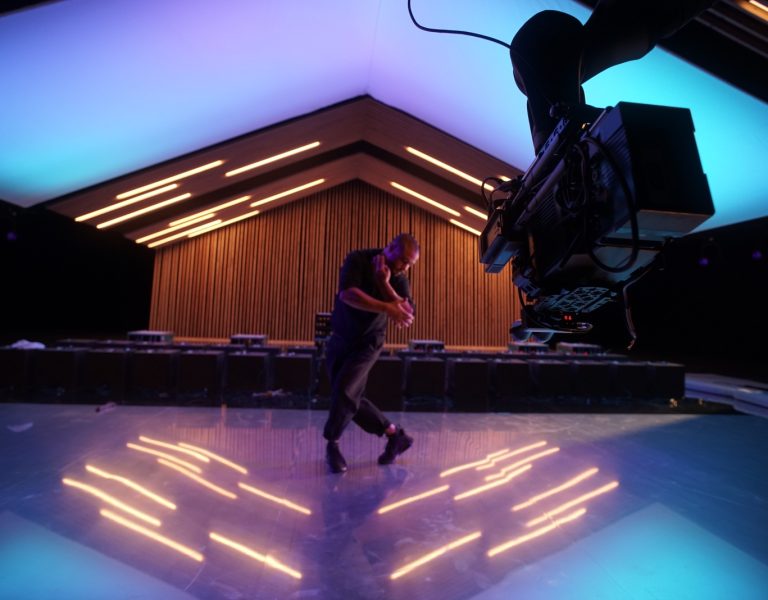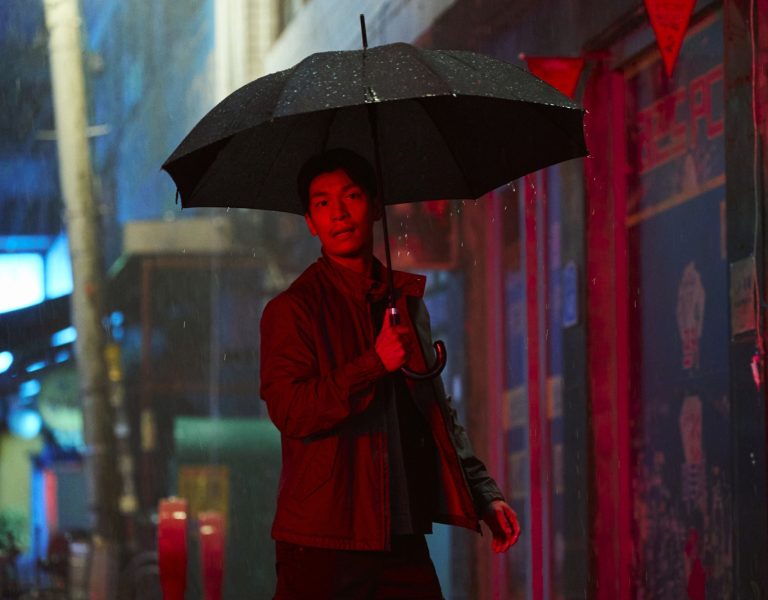NO LAUGHING MATTER
Cinematographer Lawrence Sher ASC embraces large-format digital, innovative lighting, and virtual stages to craft Joker: Folie à Deux’s dynamic visual language.
When he was shooting 2019’s Oscar-winning, $1 billion-grossing Joker, starring Joaquin Phoenix in the title role, cinematographer Lawrence Sher ASC sensed there would be a sequel. “Even Joaquin said overtly, ‘I just want to keep going. I wish we could just keep shooting and keep going even without a script. Let’s keep exploring this guy.’ So, when the movie became a success, I’m like, ‘There will for sure be a follow-up. There’ll be something that Todd [Phillips, the writer-director] and Joaquin and [co-writer] Scott Silver will come up with. Where it went, I had no idea.”
Where it went has taken everyone by surprise. Joker: Folie à Deux is part prison movie, part courtroom drama, wrapped inside a jukebox musical. Phoenix’s incarcerated multiple murderer Arthur Fleck, aka the anarchy-causing Joker, and his new partner-in-crime, Lee Quinzel (Lady Gaga), frequently break out into song, busting out old-time standards like ‘That’s Entertainment!’ and ‘For Once in My Life’. “We’re constantly going between high realism with fantasy and enhanced realism,” says Sher. “We want it to feel like something harsh and familiar, but with a touch of magic underneath it.”
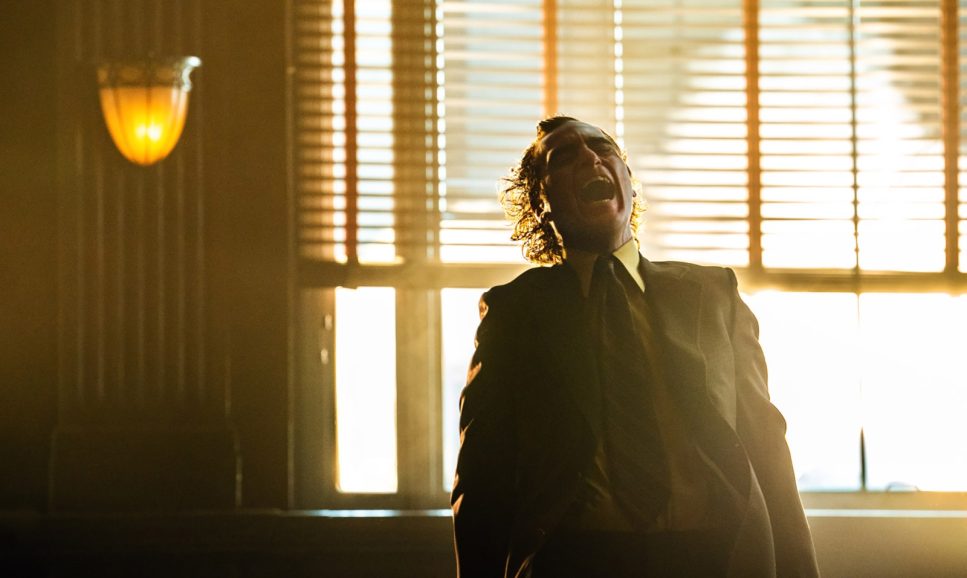
To enable this switch of styles, Sher turned to the ARRI Alexa 65, shooting on large format digital in much the way the sequel’s predecessor had been shot. “We went back and said, ‘Let’s continue the language of Joker’, which was ARRI 65,” says Sher. Likewise, a similar lens package was used to the 2019 original. “[We used a] lot of different lens manufacturers, kind of Frankenstein, but they all had their purpose,” continues the cinematographer, who namechecks everything from a 21mm Masterbuilt to a 35mm Compact Prime and a 58mm Nikon Nikkor for “when we want to get intimate and really personal with the characters”.
Sher, who also previously used the Alexa 65 to film 2019’s Godzilla: King of the Monsters, is “very comfortable” with the camera. “The biggest difference is we knew we were shooting intentionally for IMAX with the idea of changing aspect ratios for those IMAX theatres. And so, our main package was 1:90 for most cameras; we expanded to 1:43 and used different cameras for those sequences. But the 2:20, expanding to 1:90, was basically the aspect ratios that we did for the film. And so, non-IMAX theatres will see 2:20; IMAX theatres will see an expanded [ratio] that changes quite often throughout the movie.”
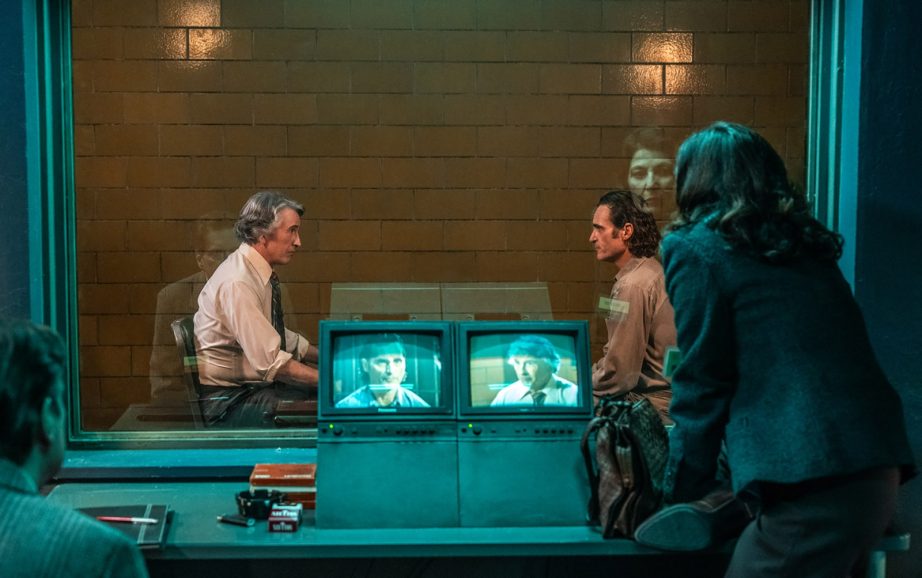
Often Sher would deploy two cameras in scenes – though sometimes three, including the courtroom sequence in the film’s second half, where Arthur Fleck stands trial for five homicides. “I operate B camera. Colin Anderson operates A,” he explains, noting that they didn’t really rehearse camera moves. “My dolly grip [John Mang] and my crane operator [Jason Talbert] will say, ‘Okay, what are we doing here? Where are we starting? Where are we ending?’ And I’m like, ‘I don’t know!’ And I lock in, get in this weird flow state, which in this movie was often…and the actors tell me where the camera needs to be, and it draws me in.”
In the courtroom, cameras are seen recording the televised trial – and feeding footage to the monitors that can be glimpsed at points. “Those cameras that you see…those are always shooting. We cut open those insides, gutted them out and put RED Komodos in with our lenses and hid them in there. So those operators are always running as well. So that at any moment if Todd or the editor wants to cut to those shots, we always have it in real time with the take that we’re shooting.” Similarly, for one of the film’s fantasy sequences – the TV variety skit called ‘The Joker and Harley Show’ – the cinematographer adds: “We replicated the three cameras that they would have in a show like that. The centre two-shot and the two singles.”
On occasion, Sher would deploy more cameras, allowing a spontaneity in performance, such as the fallout after Lee sets fire to a room in the prison, which then leads her and Arthur to temporarily escape. Using a Steadicam to track them as they start dancing together, a further four cameras were used to film the characters as they move hundreds of meters outside. “We’re putting hidden cameras in the crowd. So, when they jump on the fence and are screaming, they’re a little hidden. There are two operators, one on Joaquin, one on her. There’s a crane back there to capture it. It’s like we’ve hidden five cameras so that they can do the entire scene, and we get it.”
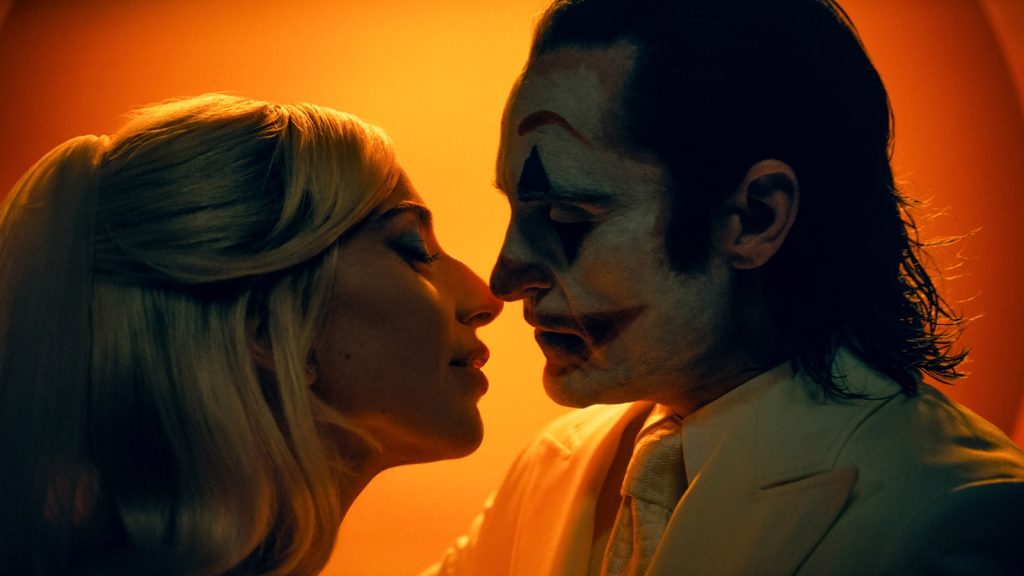
Flexible solutions
With the film shot on soundstages in Los Angeles, multi-storey 360° sets were built by production designer Mark Friedberg and his team – including the Arkham State Psychiatric Hospital where Arthur is being held. In terms of navigating the confined spaces of the Arkham sets and others, Sher notes: “My philosophy on just about every movie is the scene will dictate what it wants, right? Sometimes it wants handheld, sometimes it wants longer lenses. Sometimes it wants more static shots, and sometimes it has movement.”
Due to the roomy nature of the sets, Sher adds that there was a “key component” when it came to filming. “We were often living on a 45-foot Scorpio Technocrane, with a Matrix Head, which gave us such flexibility to not just move the camera at any point and all over the set, but also practical considerations. Even just skating over the top of a witness table, or over the tops of people in the crowd. All those kinds of things that allowed us to – even if they’re very subtle and precise – develop these master [shots].”
The crane in question became the go-to piece of equipment across the film. “Using the crane, almost like a Steadicam, with such freedom to do anything, to effectively shoot 360°, was probably the most important aspect of making this movie…from a visual standpoint,” adds Sher. “It really allowed us to do this jazz thing with joy and freedom…everything I asked them to do, they did. And there was never a situation where we were like, ‘We can’t do that.’”
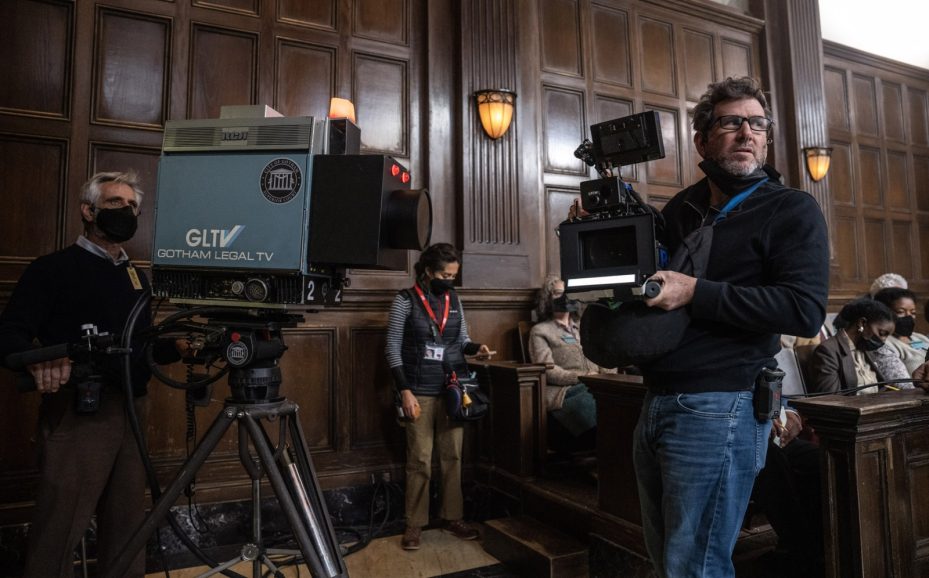
To light the sets, Sher steered the film away slightly from what he did on Joker. “On the first one, I made a real point to stay in old technology, tungsten lighting, HMIs, zips. All the technology that existed back in that day.” This time around, he switched to LED lighting, using ARRI SkyPanels and Creamsource Vortexes. “We really like the Vortexes. We have a lot of those because they have so much flexibility. They also have a lot of power. They can mimic daylight, and we can gang them together and make a big source out of them. So that was a real go-to lighting.”
With gaffer Rafael Sanchez and lighting programmer Bryan Booth, who operates the dimming of the lights, the illumination of scenes was very spontaneous, in keeping with the action. “Even between ‘cut’ and the next action, we will make massive changes based on what we saw in the first take, because that’s usually the first time we’re really seeing it,” explains Sher.
For one scene, where Arthur is lit up as he’s smoking a cigarette, portholes were made in the set to shine spotlights through. “That first take, which is in the movie of him coming to light and smoking, is us discovering it too,” says Sher. “It’s all cueing. But in a way that often you could think, ‘Well, we’re going to rehearse it really, we’re going to set cues. Somebody’s going to cue it to the music.’ Nope, we’re cueing it to the actors. The actors are cueing the music because the music’s playing live to their rhythm. So, it’s all very much in real time. We’re trying to create something that is also cinema, which is frames and lighting and those kinds of things.”
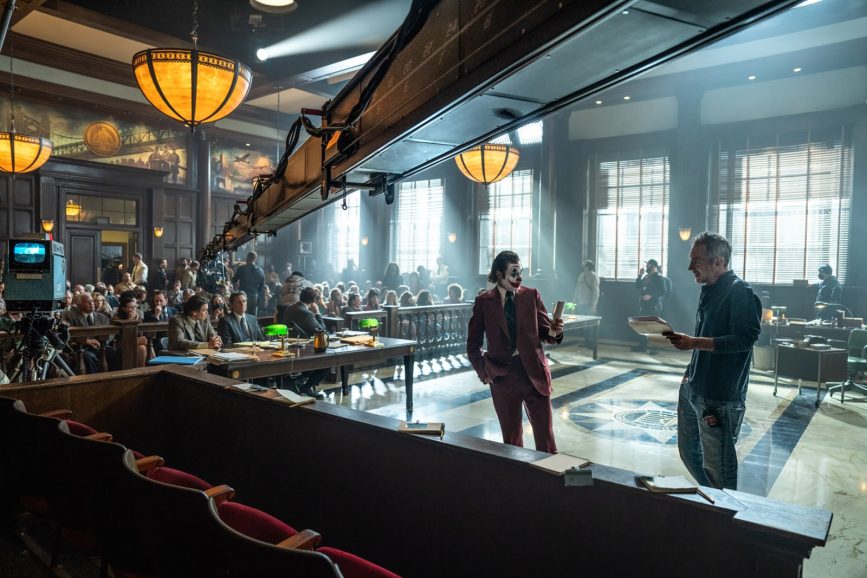
Explosive scenes
One of the film’s most spectacular scenes involves an explosion at the courtroom where Arthur is defending himself; dazed and confused, debris all around him, he then staggers into the street where he’s bundled into a car. Stitching four shots together to look like one simultaneous shot, Sher filmed the sequence on the virtual stage, the volume, using a Sony Venice camera and Rialto. “We cut out the bottom of the actual floorboard and raised the camera up two feet,” he reveals, “so the camera person is now sitting on a box, able to go 360 and be that close [to Phoenix].”
Amid all of this, Sher gives a notable shout-out to key crew Greg Irwin and Cheli Clayton-Samaras, the film’s focus pullers. “Focus pulling is always one of the most difficult jobs on the set. But here, since the camera is very often always moving and often moving on large format, on long lenses and things that are quite difficult, they did a fantastic job,” he says. “We never give them any direction from a technical standpoint; it’s always up to them to always nail it. Their margin of error is almost nothing, because the actors get to do it…as much as Todd and them wanted to. God bless, they must be perfect every time.”
After the film wrapped in April 2023 and the editing process began, Sher turned to his regular colourist Jill Bogdanowicz, who works for the Los Angeles-based postproduction facility Company 3. “We use a similar LUT [Lookup Table] that we did on Joker. We just tweaked it a little bit for the purposes of this film,” says Sher. “A lot of the heavy lifting with Jill and I, even though a lot a lot of finesse happens at the end, is really her being a greater partner and figuring out this LUT that will help us make the film look the way it does.” With her help, Sher and Phillips were able to put the finishing touches to – and it’s no joke – a spectacular-looking sequel.
